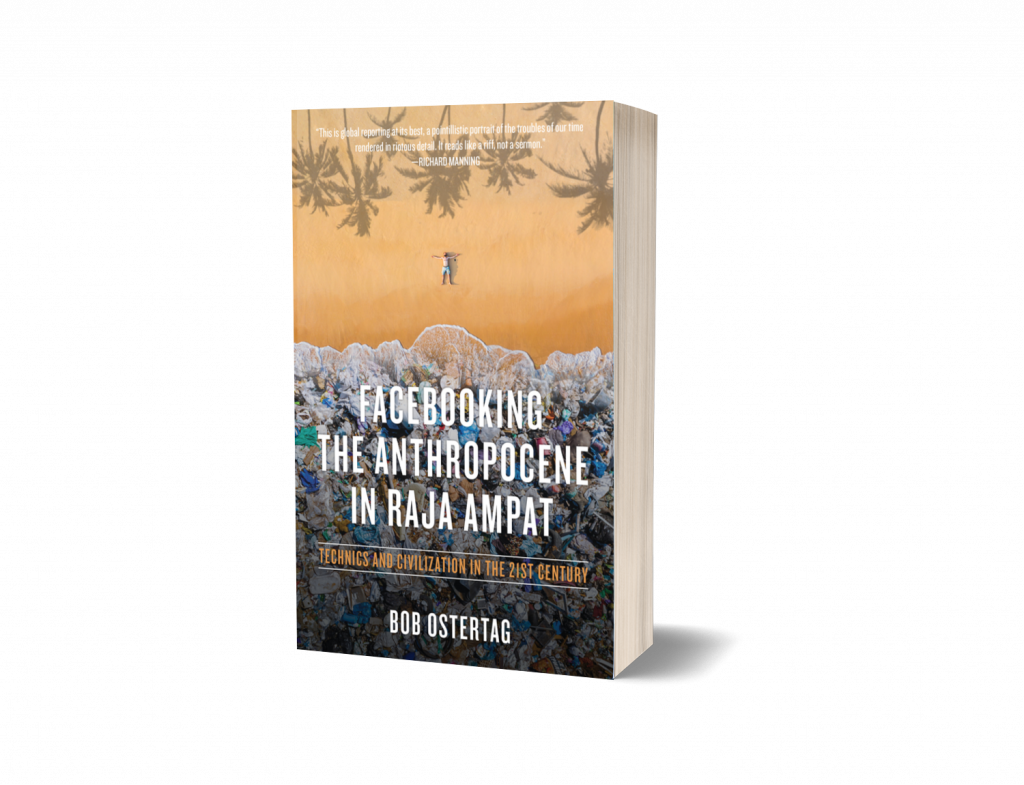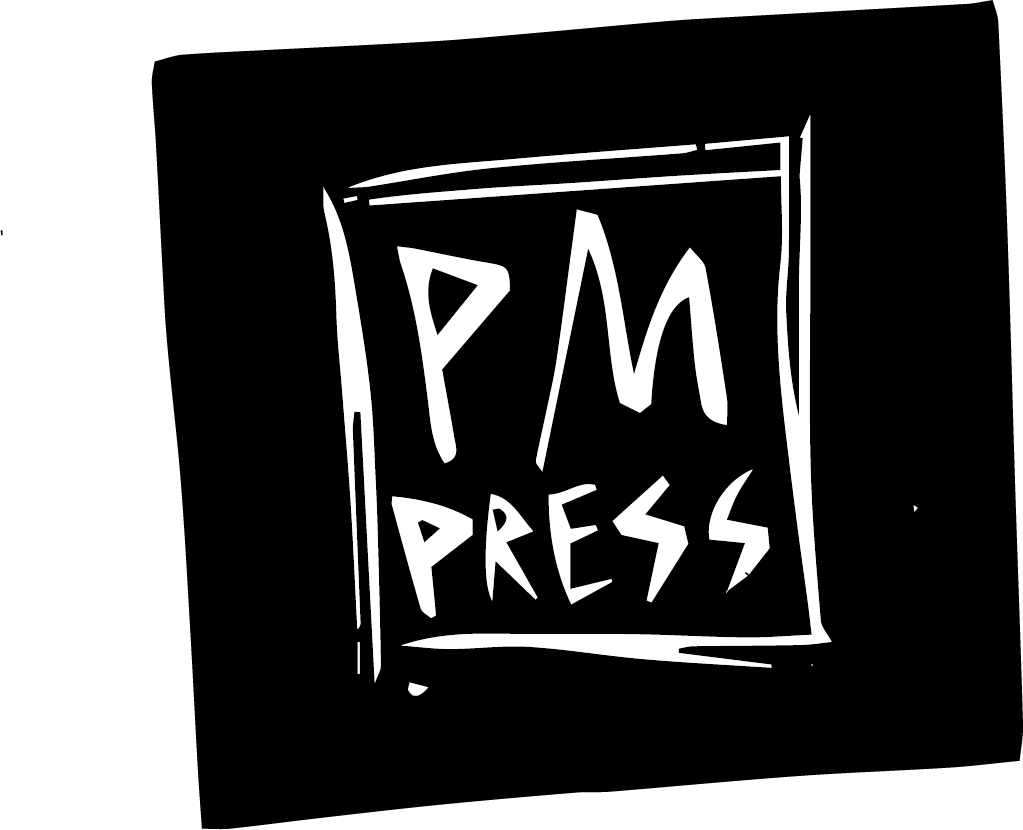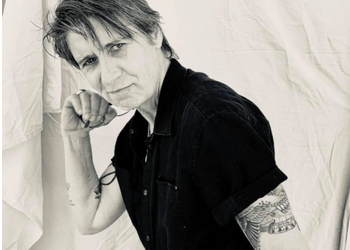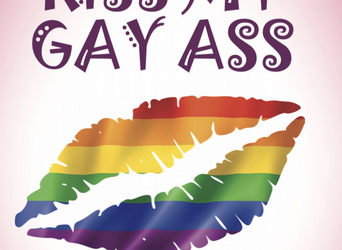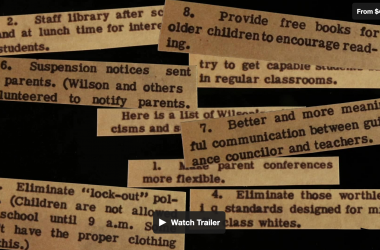By Bob Ostertag
It is a very special sort of hatred that envelopes you when you step into the streets of
downtown Hebron. In the heart of an Arab city of 166,000, where one would expect to
find a bustling market caressed by the smells of strong mint tea and the laughter of ever-
present bands of kids, one is confronted instead with a ghost town. Blocks and blocks of
empty streets and shuttered market stalls, and houses that have become cages. Literally,
cages. The doors are locked and cages have been built over the windows.
The Israeli army doesn’t call it a ghost town. In the bizarre and labored lexicon that
flourishes everywhere armies engage in activities they would rather not acknowledge, the
officially sanctioned term for the ghost town in the center of Hebron is “sterile zone.” As
in: the body politic of Hebron has an infection at its core, which the Israeli army is
sterilizing. The infection, it turns out, is the Arabs, who are now banished from their own
streets.
All of this is to protect 800 Jewish fanatics who live in settlements downtown.
“Settlement” is another belabored term designed to obscure rather than reveal. The
“settlement” in question is actually a fortress, the contemporary equivalent of a castle.
Like a castle, everything about it is designed with military and political power in mind.
Like the slit windows in medieval fortresses, its specially designed windows offer
maximum view out and minimal view in. Instead of a parapet around the top for human
sentries, there are rings of networked video cameras whose field of vision sweeps every
street and doorway in the vicinity. And instead of a moat, there are the empty streets of
the sterile zone.
It is into the bright sun of the sterile zone that our little tour alights. Our group is led by
two Israeli army veterans who did service here, and are now part of Breaking the Silence,
a group of vets who spend their time educating the Israeli public as to what being an
occupier actually entails. As part of these efforts, they run occasional guided trips to
Hebron.
There are about 20 of us: some Israelis, some visiting American Jews, some NGO
employees, and a Japanese TV crew. Tour guide Yehuda Shaul has been giving us
background on the drive in, but nothing can really prepare you for the surreal world that
greets you in the sterile zone of Hebron.
A large group of Israeli police and soldiers await us, and we are not allowed off the bus
until they are in formation. We descend from the bus into the center of a human cordon
they form around us. When everyone is out of the bus, we are ready to move out. They
give us very precise orders: move now, stop moving, move to the right 10 feet, cluster
into two groups, move the two clusters into one, etc. The idea is that at no time should
any one of us, even for one second, be on these streets unless closely surrounded on every
side by a human shield of cops. It takes something like 75 armed police, with a military
vehicle in the lead and another in the rear, to move us down the street.
Now, if you are thinking that this level of force is required to protect us from angry
Palestinians, you have it all upside down. This is all to protect us, a primarily Jewish
group led by Jewish army vets, from the Jewish settlers, who attack these tours with
rocks and eggs and various sorts of physical intimidation. But they all carry guns and the
potential for settler violence to escalate is ever present.
Today the only weapons that get used are cameras. Lots and lots of cameras. Most of the
members of our group have cameras. The Japanese TV crew is filming. The police have
at least one guy with a video camera that is never turned off. We are closely followed by
a settler with a camera who films our every move, barging around amongst us in the most
intimating way he can manage (and largely unobstructed by our protective shield of
cops). Apparently he is the “official” setter videographer of unwelcome guests. Other
“unofficial” settler cameramen also barge in and out. On the other side, some NGOs have
passed out cheap cameras to Palestinians in the sterile zone to document settler violence
against them. And then there are the army cameras relentlessly monitoring everything
from the roof of the settlers’ citadel.
Every move we make as we slowly move through the deserted streets is being filmed
from at least four different angles, and plugged into four different narratives. The army
cameras get everything, so you might think the police cameras are redundant. But the
army does not share their tapes with the police. The army is there for one thing only: to
protect the settlers. “Law enforcement” is the cops’ job, but in fact the only law
enforcement that goes on here is in regards to the Palestinians. The settlers are a law unto
themselves.
In fact, one Israeli policeman who is viewed by settlers as insufficiently hostile to
Palestinians was involved in an altercation in which a settler verbally threatened to kill
him and all his children. Knowing that the army cameras had recorded the encounter, the
police asked the army for the tapes as criminal evidence but the army refused. The army
is there to defend the settlers, period. The police were reduced to asking the Palestinians
who had been given video cameras by international aid organizations if by chance any of
them had caught the altercation on tape.
So we form this weird cellular organism, rolling down the street, reconfiguring itself in
different shapes but always surrounded by an outer shell of cops. The market stalls are
shuttered. None have been open for business in years. The first and second story windows
of the homes are caged in. The third story windows, which are not caged, are all broken
from settlers throwing rocks in them. No settler is ever punished for this behavior. The
legal structure here is only for punishing Arabs. Some of the Arab doors have skulls and
crossbones painted on them. These are new. Our tour guides have never seen this before.
Under the skulls the word “revenge” is painted.
The only way the Arabs will see the skulls is by looking across the street at their
neighbor’s house, because everyone in this neighborhood is prohibited from going out
their front door. That is part of what makes this zone sterile. Arabs are only allowed to go
out their back door. The street is sterile and thus cannot be contaminated by their
presence.
It is part of a system that is itself unimaginable. Each street is treated differently. There
are some on which Arabs are not allowed at all. There are some on which they can walk
but not drive. There are some on which they can walk but only on one side of the street.
There are some where people can go out of their front doors but only turn one direction.
Movement between each of these zones is only allowed through controlled checkpoints at
which documents must be presented which state which combination of zones you are
allowed in and prohibited from. People who have access to one sort of zone may not visit
people in other sorts of zones. If you live on one of the streets where you cannot go out
your front door, not only will you have to go in and out the back, but no one will be able
to visit your house no matter what door they go through. And every single checkpoint is
an encounter with the Jewish state which always has the possibility of ending badly.
The Arabs who continue to live in these zones are not holding out to make any sort of
social or political statement. They are they because they are the ones who really and truly
have no other place to go.
As our little amoeba rolls down the street, busloads of prospective settlers, mostly high
school kids, pull up to visit the wonderful world for Jews that the settlers are opening up.
They clap and sing Jewish songs as the walk through the streets of the ghost town which
would give any normal, thinking person chills, but which they somehow honestly seem to
see as the most beautiful place on earth, an inspirational vista they will give serious
consideration to making their home. As they pass our little group they yell and chant
extra loud, trying to drown out our guide. Dueling tours through a ghost town in hell.
Down the street from the settlers’ fortress is the Tomb of the Patriarchs. The Tomb of the
Patriarchs doesn’t get all the international fanfare that Jerusalem does, probably because
Christians are not so invested in it. But both Judaism and Islam agree that entombed
within are Abraham, Isaac, and Jacob; Sarah, Rebekah, and Leah; and also Adam and
Eve. That’s right: Adam and Eve.
Like they say in real estate: location, location, location. The Tomb of the Patriarchs has
everything to do with the fact that there are 800 violent Jewish fanatics in a fortress up
the street, and why Arabs are not allowed on the surrounding streets. Though Arabs are
allowed in the Tomb as long as they approach it from one direction. Arabs and Jews both.
The Tomb is now divided, each has their own side.
As we approach the area of the Tomb, the Muslim call to prayer floats out from speakers
in the minaret. From a settler building across the street, kitschy Jewish folk pop amps up
from loudspeakers that are placed to drown out the call to prayer. In addition to the
legions of cameras, the battle of sound systems has now been engaged as well.
There is another nearby sound system run by the “new age” settlers. As opposed to the
Ultra-Orthodox settlers who are often from Brooklyn, the new age settlers are often from
California, and can be easily spotted wearing tie-dyed clothing and listening to
Reggaeton. And they can be the most violent of the settlers, as they are not only racist
and fanatical but anti-authoritarian to boot. Sometimes the Muslim call to prayer is dually
engaged by settler factions launching Jewish religious kitsch from one side and the
Grateful Dead from the other. Jerry Garcia is puking in his grave.
There is one little Arab shop across the street from the Tomb of the Patriarchs which is
allowed by the Jewish army to remain open to present some sense of normalcy no matter
how remote to tourists visiting the shrine (not so many these days). Though the
shopkeeper is Arab, he cannot sell any of his goods to Arabs, for Arabs are not allowed
on this street. Only he has the required permission. In spite of all this, the restrictions on
movement, the thrown rocks, the whole ghost town – what the shopkeeper says bothers
him most are the incessant sound system wars surrounding his tiny island of retail.
Before leaving Hebron, we visit Kahane park to see the grave of Baruch Goldstein. You
might remember him. He was a Hebron settler. In 1994 he dressed up in his Israeli army
uniform, walked into the Tomb of the Patriarchs during Muslim prayers and started
throwing grenades and firing an automatic weapon, murdering at least 29 worshipers and
wounded 150.
The settlers have constructed a park in his honor. In the middle of this Muslim city, by the
fortresses of the fanatical religious settlers, amongst the singing and clapping school kids,
lies the grave of Rabbi Baruch Kappel Goldstein, who was eventually overpowered in the
mosque after his granades and bullets ran out, and his own body fell amongst the nearly
200 dead and wounded. The epitaph on his tombstone honors the “Beloved Rabbi Baruch
Kappel Goldstein… Who gave his life for the sake of the People of Israel, his Torah and
his Land,” who died “Clean of Hand and Pure of Heart.”
**
The members of Breaking the Silence are among the most thoughtful, nuanced,
understated, and motivated activists it might ever be your pleasure to meet. They do not
advocate any political position. What they do is give witness. As Yehuda Shaul puts it,
“We don’t know about a one-state or a two-state solution. Maybe others know about that.
But we do know one thing: we know what it means to be an occupier.”
What it means to be an occupier is what Breaking the Silence is trying to convey, to Israel
and to the world. Members, all Israeli army vets, speak to draft-age Israeli youth. “But we
do not encourage them to refuse service,” Shaul explains. “We cannot resolve the moral
dilemma for them. Our duty is to let them know what their decision really involves, what
an occupation really is.”
Shaul believes the political dynamic in Hebron is fundamentally determined by the fact
that the only Jews with a long-term view of the situation here are the settlers. Every other
Jew in Hebron – the soldiers, the police, the officers, whatever government officials
might occasionally visit – cycle in and out. They do their time, whether it is a few hours
or a few years, and then they go. “The soldiers here don’t know any of this. They
probably don’t even know that the Palestinians on this block are not allowed to go out
their front door. They certainly don’t know why. Everyone else at best thinks tactically
and short term if they think at all. Only the settlers think strategic and long-term.”
And it is amazing to see how the settlers game the system. The basic dynamic is this: a
settler or two does something horrible and unprovoked to the Palestinians, and the army
immediately imposes a curfew, essentially placing the entire city of 166,00 under house
arrest. When the curfew is eventually lifted, the army decrees that, due to increased
tensions, the only way to protect the settlers is to banish Palestinians from a few more
streets. Or it might be much more mundane than that. The settlers demand army
protection on a road that they typically use. The army bans Palestinians from the road.
Then the settlers change the road they use and demand protection there. By that time the
military personnel who were around for the closing of the first road are already gone. It is
a system that structurally encourages violent settler fanaticism. For settlers, there is no
downside to outrageous behavior, only reward. Breaking the Silence has testimony from
soldiers stationed in Hebron who had to deal with settler mothers lying their infant babies
on the road in front of army jeeps to prevent them from moving.
Hatred on the scale you see in Hebron is something rare in the world. Its not like you
cannot find it in the world, but it is far, far from normal. And a good thing too, or we
humans would simply tear each other apart. Which, of course, is pretty much what they
did in the days when the foundational beliefs of the cultures involved were established.
People are not born with this sort of hate. It has to be learned. I have seen this in El
Salvador in the 1980s, and was near to it in the Balkans in the 1990s. In order to produce
behavior this deeply abhorrent, people have to be deliberately trained, you have to
indoctrinate them over a period of time. All kinds of conditions have to be right. And then
the real shock troops, the ones who actually do the real physical damage, have to be
indoctrinated even more. Social norms which keep hatred and cruelty within the bounds
we normally think of as civilized have to be radically expanded to make room for this
unbound hate. Once the terrain of socially acceptable hatred has been sufficiently
expanded, it is not so difficult to get people to occupy it. But to force back those borders
in the first place involves violations of deep taboos, and to smash through those you need
training.
Ultimately, I think this is what Yehuda is grappling with when he describes how it wasn’t
until he was actually stationed in Hebron that he understood what the real dynamic was
between the settler movement, the Israeli state, and Israeli society, and how the settlers
are the engine on that train. In a deeply tragic way, the lesson of Hebron is that through
the Israeli state and the settler movement, Jewish culture itself has been twisted so as to
train people in hate.
The army vets from Breaking the Silence again and again return to fundamental questions
of religion and ideology. “The story here is not about security, it is about religion.”
Yehuda is measuring his words very carefully. “Yes, there are security issues here, but the
reason they are here is because of religious issues. So people are going to have to decide
what they believe.”
**
I did not go to Israel to visit Hebron, I went to play concerts of my music. Back in Tel
Aviv, the hip young Israelis who invited me here, and the venues at which I perform, are
at the core of a very deep effort to try to come to terms with with the cultural catastrophe
that surrounds them. They are admittedly a small voice in the larger context of Israeli
society, but they are real and are heard to at least some degree. They are not thinking
about “solutions.” Solutions are simply too remote at this point. They don’t spend much
time debating one-state or two-state solutions, or rights of return, or where to draw
borders or build walls. What they are deeply, conscientiously engaged in is a
reassessment of exactly how Jewish culture arrived at this catastrophe, locked in an
apocalyptic dance of death with everyone around them, with the Jews in the role of
oppressor, and with the most racist, violent, and intolerant among them with a
stranglehold on the direction of the nation.
In Jerusalem my concert takes place not far from the walls of the Old City in a club
named Uganda, which is really quite humorous and even subversive if you think about it.
The reference is to a British proposal from 1903 to create a Jewish homeland in British
East Africa, a proposal which briefly competed with Palestine within the international
Zionist movement. The club’s owner explains with a chuckle that he chose the name of
the club as a way to suggest that “we don’t belong here.”
In these circles, the settlers in Hebron are referred to as fascists. Jewish fascists. It was
quite startling to hear this, as I have never heard Jews in the US, even the most
progressive, speak about Israelis this way. What one is more likely to hear in the US is a
debate about whether the Occupied Territories can be legitimately compared with
apartheid, though the fact is South Africa never had anything like Hebron.
One night I ask some friends over beer what, precisely, do they mean when they speak of
Jewish fascism. As happens so often in this crowd, they have an extremely educated,
thoughtful answer at the ready. Basically, their idea is that fascism is what you get when
you mix racism, militarism, and mysticism. Not organized religion per se (that can be
present or not), but a certain mystical sense about your clan as the chosen people. And if
you add to the mix an attachment to a particular piece of land, then you’ve hit the nail on
the head. (This last point, in this view, is the connection between Reggae and the new age
Jewish fascists, because Reggae and Rastafarianism also speak of exile, and a sort of
vague, mystical attachment of a people to a land to which they will return.)
None of this is a particularly big deal among this crowd. For them it is just the facts of the
matter. Which makes the contrast all the more jarring when I have an Internet chat with a
friend back home. My friend is Jewish American, and a prominent progressive on the far
left of the spectrum of American activism. He wants to know all about my trip, but when
I get to this part he interrupts: “Wait, they really say ‘Jewish fascists?’” Yes, I explain. I
recount the whole racism + militarism + mysticism = fascism equation, and add that
Kabbalistic references and imagery are seen as the mystical element in the equation that
adds up to the specifically Jewish face of fascism. After a silence, my friend responds,
“Well, I guess it might make sense to speak in those terms in Israel, but it would make no
sense at all in the US.” We go back and forth a few times, and he sticks to his position
that this sort of vocabulary has no place outside of Israel.
As a rule I am not one to quibble over words, especially words like “fascism” that come
overloaded with emotional freight, the weight of which often crushes the fragile
structures of reasoned discourse, with the unhappy result that the discussion degenerates
into a dog fight over words as symbols instead of a real engagement with their meaning.
So it is fine with me to do without the word “fascism.” What bothers me is the idea that it
could be appropriate to use the term in Israel but not in the US.
The United States doesn’t just send $3 billion dollars of military aid to Israel every year.
Many of the most violent settlers are American-born. Listening to the settlers in Hebron
talk you might think you were on the streets of Brooklyn. Rabbi Goldstein – from
Brooklyn. Rabbi Kahane, the ideologue of Jewish fascism – from Brooklyn. All in all, the
US sends the money, the weapons and bullets, the shock troops, the ideology, and
provides the international political cover. Why on earth should the terms of the debate be
any different in the US than in Israel?
The Uganda record shop and music club in Jerusalem can also be found on MySpace
here: http://www.myspace.com/ugandashop.
Breaking the Silence has an English web site here: http://www.breakingthesilence.org.il/
index_e.asp
